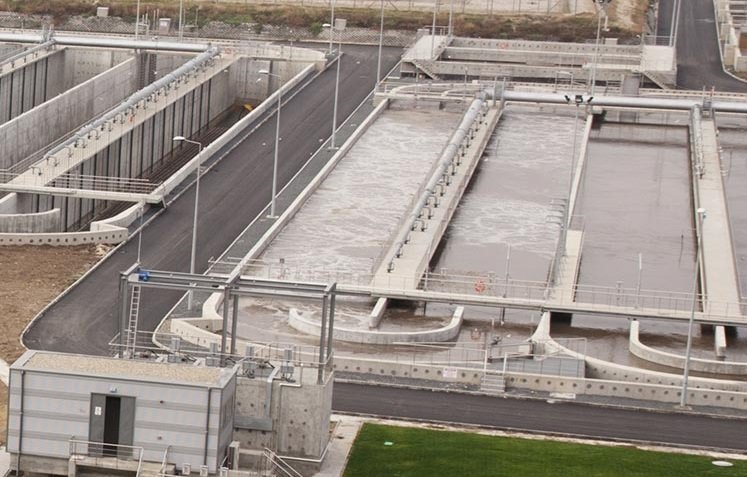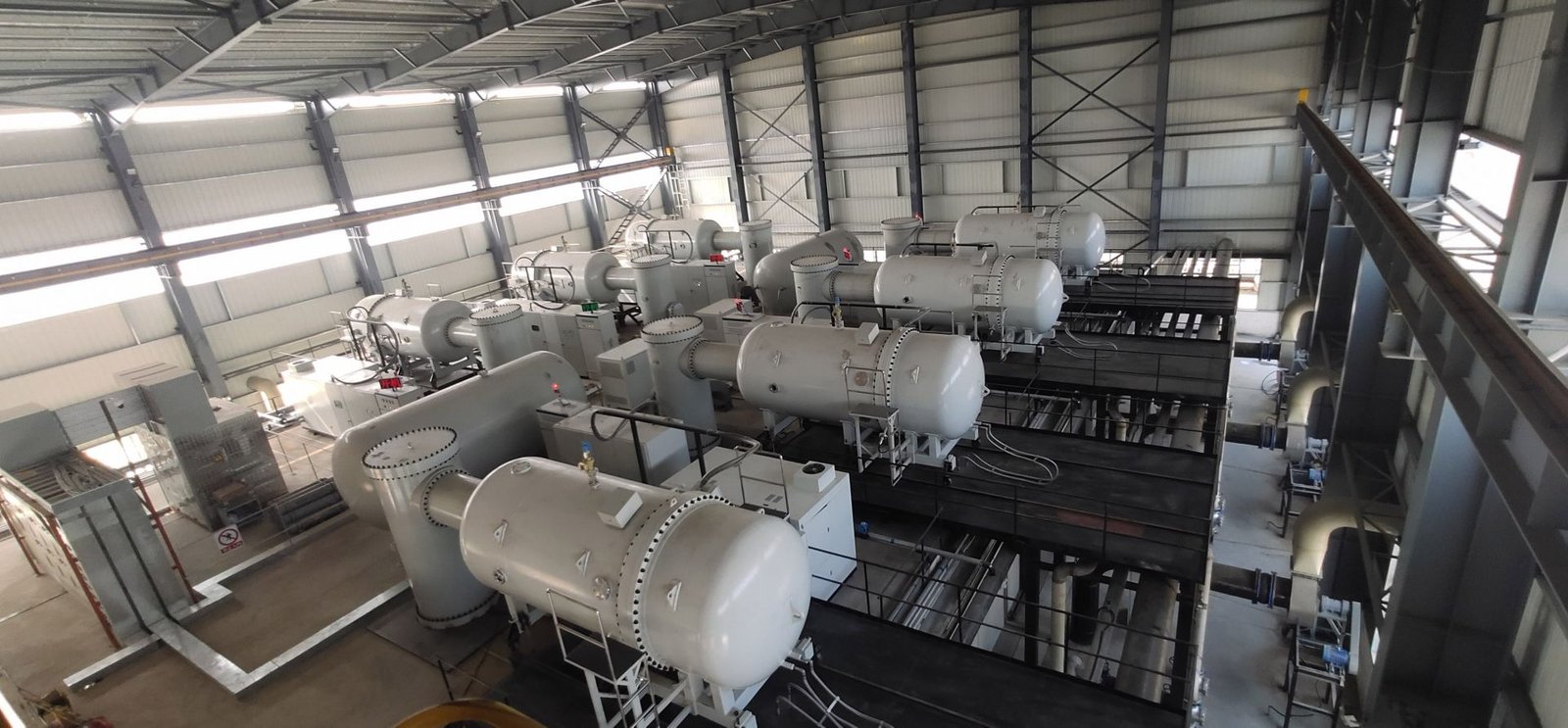
Ammonia Exchange in Wastewater: Essential Processes and Technologies

Ammonia exchange in wastewater treatment is a critical process for managing nitrogen levels and maintaining environmental safety. High concentrations of ammonia in wastewater can lead to eutrophication in water bodies, a process that depletes oxygen and harms aquatic life. To address this, various technologies have been developed for the efficient removal or conversion of ammonia from wastewater. These processes ensure that when the treated water is released into the environment, it poses minimal risk to ecosystems and complies with regulatory standards.
The process of removing ammonia typically involves biological treatment methods, such as nitrification and denitrification, or chemical processes like ion exchange. Ion exchange, in particular, has gained attention for its ability to selectively remove ammonia from wastewater streams. This method involves exchanging ammonium ions in the wastewater with other ions, typically on a resin or a similar medium. The choice of process depends on various factors, including the composition of the wastewater, the discharge standards required by local regulations, and the specific needs of the area where the water will be discharged.
Key Takeaways
- Ammonia exchange in wastewater is essential for reducing environmental harm and meeting regulatory standards.
- Biological and chemical methods, including ion exchange, are utilized for effective ammonia removal.
- The selection of ammonia exchange technology is influenced by the characteristics of the wastewater and environmental guidelines.
Fundamentals of Ammonia in Wastewater
Understanding the fundamentals of ammonia in wastewater is critical for efficient treatment processes. Ammonia’s chemical behavior and its effects on the environment underline the importance of effective removal or conversion methods, such as ammonium exchange.
Chemistry of Ammonia and Its Compounds
Ammonia, or NH3, is a compound of nitrogen that easily dissolves in water, forming ammonium ions (NH4+). This equilibrium between ammonia gas and ammonium ions is pH-dependent; at higher pH levels, more ammonia gas is present, while at lower pH levels, ammonium ions dominate. In wastewater, the presence of ammonia and ammonium is a factor in selecting appropriate treatment processes, as these forms have different reactivity and environmental impacts.
Sources and Impact of Ammonia in Wastewater
Ammonia enters wastewater from various sources, including agricultural runoff, industrial effluents, and human waste. Elevated levels of ammonia in water bodies can lead to eutrophication, depleting oxygen levels and harming aquatic ecosystems. Furthermore, as part of the nitrogen cycle, ammonia can convert into nitrites (NO2-) and nitrates (NO3-), substances that, in excess, pose a risk to human health. Therefore, ammonia removal, primarily through biological treatment processes such as ammonium exchange, is vital for maintaining water quality.
Ammonia Exchange Processes and Technologies
In wastewater treatment, ammonia exchange processes are critical for protecting water quality and ecosystem health. They involve various physical, chemical, and biological methods to remove or convert ammonia into less harmful substances.
Physical Methods for Ammonia Removal
Physical methods for ammonia removal primarily involve separating ammonia from wastewater without changing its chemical form. Stripping is a common method where wastewater is aerated, causing the ammonia to escape into the atmospHere as a gas at high pH levels. Ion exchange is another technique where wastewater passes through resins that exchange ions, effectively removing ammonia in the process. This can be particularly effective in applications described by the implementation of partial nitridation and anammox (PN/A) processes, which can lead to energy savings and a reduced carbon footprint.
Chemical Treatment Options
Chemical treatments involve adding reagents to wastewater to chemically transform ammonia. Breakpoint chlorination is a process where chlorine is added until the ammonia is fully oxidized, transforming into nitrogen gas. In chemical precipitation, compounds like calcium chloride and magnesium ammonium phosphate help in precipitating ammonia, facilitating its removal from wastewater streams. These techniques are tailored to comply with environmental regulations, aiming at the reduction of harmful ammonium compounds.
Biological Processes for Ammonia Conversion
Biological processes rely on microorganisms to convert ammonia into safer compounds. Nitrification is a two-step process where bacteria oxidize ammonia to nitrite and then to nitrate. Anammox (anaerobic ammonium oxidation) is another biological method, whereby anammox bacteria directly convert ammonia and nitrite into nitrogen gas in the absence of oxygen, which is notably more energy-efficient. This process is gaining attention in the field of wastewater treatment due to the potential for significant energy savings and a lower CO2 footprint. This biological approach not only helps in reducing ammonia levels but also contributes to sustainable wastewater management.
Design and Optimization of Ammonia Exchange Systems
The efficiency of Ammonia Exchange Systems in wastewater treatment is paramount, requiring meticulous design and continuous optimization for maximum operational effectiveness and environmental compliance.
System Engineering and Design Considerations
In engineering an Ammonia Exchange System, experts must first evaluate the specific requirements of the wastewater to be treated. Accurate determination of the ammonia load and the composition of the wastewater influent is vital. Engineers typically design systems that integrate ion exchange processes, wherein ions in the wastewater are exchanged for different ions affixed to a media. This process is particularly effective in removing ammonia (NH4+), which is exchanged with other harmless substances.
Here are some fundamental design considerations:
- Media Selection: The choice of ion exchange media is crucial. It must possess high selectivity for ammonia, excellent capacity, and be suitable for regeneration.
- Reactor Configuration: The system’s architecture, whether it is a packed bed, fluidized bed, or batch reactor, should ensure optimum contact between the wastewater and the ion exchange media.
- Flow design: Engineers must design the flow to optimize contact time and prevent channeling, whilst considering backwashing and regeneration cycles.
Operational Parameters and Performance Monitoring
To ensure an Ammonia Exchange System operates at peak performance, several operational parameters must be constantly monitored and adjusted:
- pH Levels: Ammonia exchange is pH-dependent, with optimal removal achieved under slightly acidic to neutral conditions.
- Temperature: Since reaction kinetics are temperature-dependent, maintaining an optimal temperature range is essential for the consistency of ammonia removal rates.
- Regeneration Frequency: Regular regeneration of the exchange media ensures its longevity and performance. This involves monitoring the breakthrough curves and ion exchange capacities.
Performance monitoring also includes the analysis of effluent quality indicators such as the concentrations of ammonia and other nitrogen species. This data should be regularly recorded to track the system’s efficiency and to facilitate timely interventions when parameters deviate from the standard set by regulatory guidelines. Operational logs and continuous monitoring via sensors are instrumental in maintaining an optimized ammonia exchange process.
Regulations and Environmental Standards
Ammonia exchange in wastewater is subject to stringent controls due to its potential environmental and health impacts. Regulations typically set limits on ammonia concentrations in discharged water to prevent harm to aquatic ecosystems and ensure water quality for human use.
Global and Regional Regulatory Frameworks
Global and regional entities enforce varying standards regarding the presence of ammonia in wastewater. The World Health Organization (WHO), for example, provides guidelines on water quality, which act as a benchmark for countries developing their regulations. The European Union (EU) has the Urban Wastewater Treatment Directive, specifying treatment requirements for discharges from urban wastewater treatment plants. In the United States, the Environmental Protection Agency (EPA) regulates ammonia levels under the Clean Water Act, with the National Pollutant Discharge Elimination System (NPDES) permitting process.
Compliance Measurement and Reporting
Compliance with ammonia exchange regulations requires accurate measurement and reporting of ammonia levels. Facilities must commonly perform standardized tests such as the Nessler method or the Ammonia Ion Selective Electrode technique to monitor concentrations. Reporting typically involves submitting regular compliance reports detailing treatment plant performance, which are critical for regulatory agencies to ensure that the wastewater plants comply with the set ammonia standards. Failure to meet these standards can result in fines, legal action, or operational restrictions.
Case Studies and Real-world Applications
Ammonium exchange processes are critical in wastewater treatment, both in municipal and industrial settings. These examples outline the effectiveness and applications of these systems.
Municipal Wastewater Treatment Facilities
In municipal wastewater treatment, ammonium exchange is implemented through advanced biological processes that involve nitrification and denitrification. A notable case is the wastewater treatment plant in Duluth, Minnesota, which employs a sophisticated tertiary treatment process. This plant has successfully demonstrated the removal of ammonium from wastewater influent, ensuring the effluent meets stringent regulatory standards. Their success is documented, focusing on the concentration of quaternary ammonium compounds detected both in influent and effluent streams.
Industrial Effluent Treatment Examples
Industrial applications of ammonium exchange are diverse, addressing specific pollutants from varied industrial processes. For instance, chemical manufacturing plants often use ion exchange systems to remove ammonium ions from their waste streams before discharge. These systems ensure that the treated water is safe for release into the environment or suitable for reuse within the plant. Treatment efficiency and process design can be complex, and tailored to the types of industrial effluent being processed.
Challenges and Future Perspectives
Ammonion exchange in wastewater treatment faces several challenges, including handling emerging contaminants and integrating sustainable practices. Addressing these will require innovative technologies and a focus on resource recovery.
Emerging Contaminants and Treatment Technologies
Emerging contaminants such as pharmaceuticals, personal care products, and hormones increasingly find their way into wastewater. They pose significant challenges as traditional ammonion exchange systems are not designed to remove these minute, yet biologically active compounds. The development and integration of advanced treatment technologies, capable of effectively removing such contaminants, are critical for modern wastewater treatment plants. This calls for research into new media for ion exchange, enhanced bioreactors, or other novel methods that are efficient and cost-effective.
Sustainability and Resource Recovery
The principles of sustainability and resource recovery are paramount in the design of future wastewater treatment systems. Ammonion exchange processes have the potential not just for treatment but also for the recovery of ammonia as a resource. This aligns with sustainable practices, reducing the reliance on chemical fertilizers and lowering the carbon footprint of the treatment process. However, adapting existing systems to enable recovery rather than mere removal requires substantial innovation and investment. Improved ion exchange methods, such as those that facilitate partial nitritation and anammox, can contribute to energy savings and CO2 reduction, but the challenge lies in optimizing these processes for mainstream municipal wastewater with varying compositions.
Frequently Asked Questions
What are the common methods for removing ammonium from wastewater?
Common methods for ammonium removal in wastewater include biological nitrification-denitrification, chemical precipitation, air stripping, and ion exchange. Each method has distinct mechanisms and efficiencies, catering to different treatment requirements.
How does the ion exchange process work in treating wastewater?
The ion exchange process for treating wastewater involves exchanging ammonium ions in the wastewater with other ions, such as sodium or potassium, from an exchange medium or resin. This reversible chemical process is widely used due to its simplicity and effectiveness.
What role does clinoptilolite play in ammonia removal?
Clinoptilolite, a naturally occurring zeolite, serves as an effective ion exchange medium for ammonia removal. Its microporous structure allows for the selective adsorption of ammonium ions from wastewater, making it a valuable material in the ion exchange process.
What are the effects of high ammonia levels in wastewater effluent?
High ammonia levels in wastewater effluent can lead to eutrophication in water bodies, resulting in algal blooms and hypoxic conditions that can harm aquatic life. It can also pose health risks to human populations and disrupt the natural balance of ecosystems.
How effective is zeolite as an ammonia remover in wastewater treatment?
Zeolite is highly effective as an ammonia remover in wastewater treatment because of its high surface area, microporous nature, and ion exchange capabilities. It is capable of reducing ammonia content significantly, making it a preferred component in many treatment systems.
What are the environmental impacts of untreated ammonia in wastewater?
Untreated ammonia in wastewater can lead to increased toxicity in aquatic environments, harming fish and other organisms. It also contributes to nitrogen pollution, which can upset the ecological balance and potentially contaminate drinking water sources.

